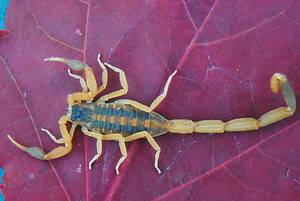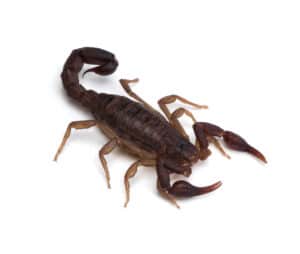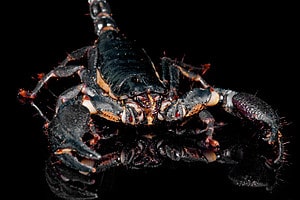Scorpions are equal parts creepy and cool, but there’s also a bit of mystery surrounding these interesting creatures. Most people don’t know if they are insects, spiders, or something else entirely! Today, we are going to be answering the question of how many legs they have (which gives us some clues as to what kind of creatures they are), plus learning a bit more about them with some interesting facts. Let’s get started and learn about scorpions!
How Many Legs Do Scorpions Have?
Scorpions are predatory arachnids (which are NOT classified as insects) of the order Scorpiones. They belong to a group of animals known as arthropods, which also include spiders, lobsters, and crabs, their closest living relatives. Scorpions have eight legs, but they may look like they have six because two of them act as pincers. The scorpion’s body is divided into the cephalothorax and the abdomen. The cephalothorax has four pairs of walking legs and two pincers. The abdomen has a flexible tail with a venomous sting at the end, which, to be clear, isn’t classified as a leg.
5 Interesting Facts About Scorpions
Let’s learn a few interesting scorpion facts!
1. Scorpions Can Go a LONG Time Without Food
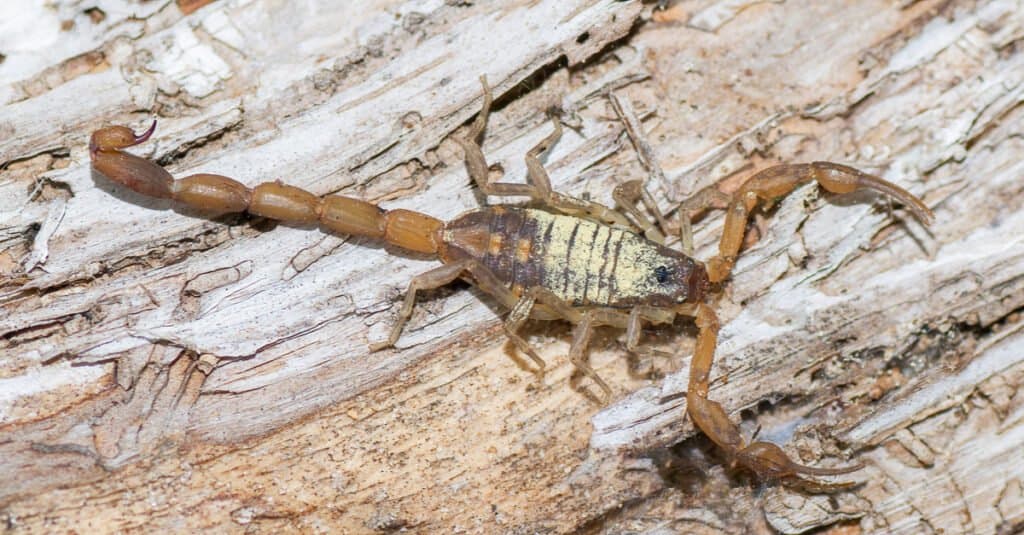
Scorpions can go for a year without eating.
©Chase D’animulls/Shutterstock.com
Incredibly, scorpions can go a really long time without eating or drinking anything. This survival strategy seems to complement the harsh environments that scorpions are often found in perfectly! They are able to reduce their water consumption through a fat layer on their exoskeleton and through slowing their metabolism when the situation demands it. Additionally, they can get moisture from their food, negating the need for water alone. Scorpions can sometimes go for up to 12 months without food!
2. Scorpion Bodies Glow in the Dark with UV Light
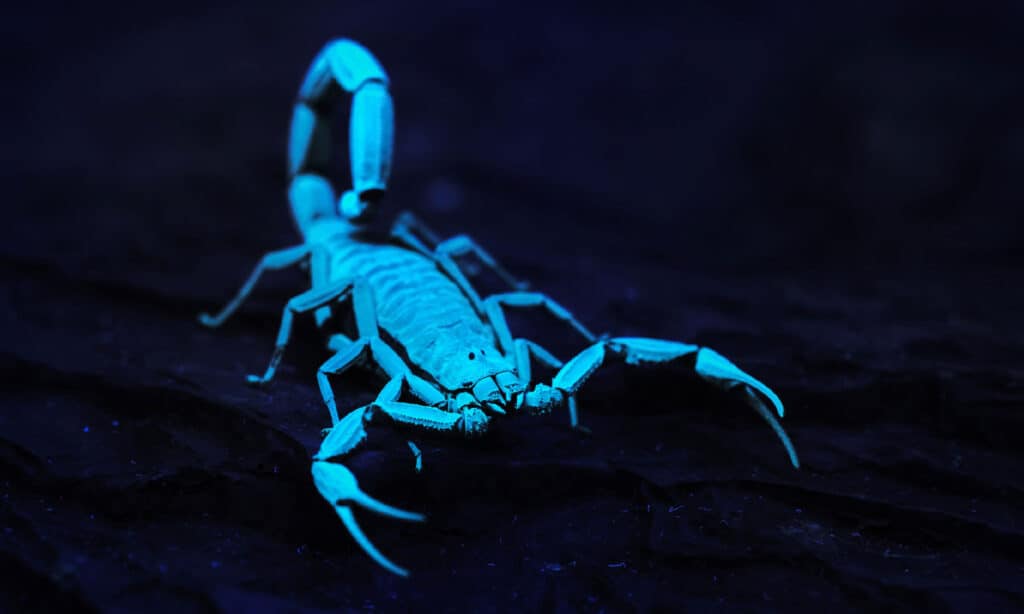
Scorpions have a special molecule in their exoskeleton that makes them glow in UV light.
©iStock.com/alekseystemmer
Maybe the coolest scorpion fact, scorpions can glow under ultraviolet light from sources like manmade blacklight or moonlight! This strange feature happens because their exoskeleton contains hyaline, which reacts to UV light and re-emits it as a vibrant blue-green light. The hyaline layer is very thin but super tough, and it can even make fossilized scorpions or scorpion parts glow under UV light. Scientists are not sure why scorpions have this ability, but some possible explanations are protection from sunlight, navigation, communication, prey detection, or some combination of them all. Regardless of the reason, taking UV light into the desert is a great way to check for scorpions at night!
3. Scorpions Are Among the Oldest Arthropods in the World
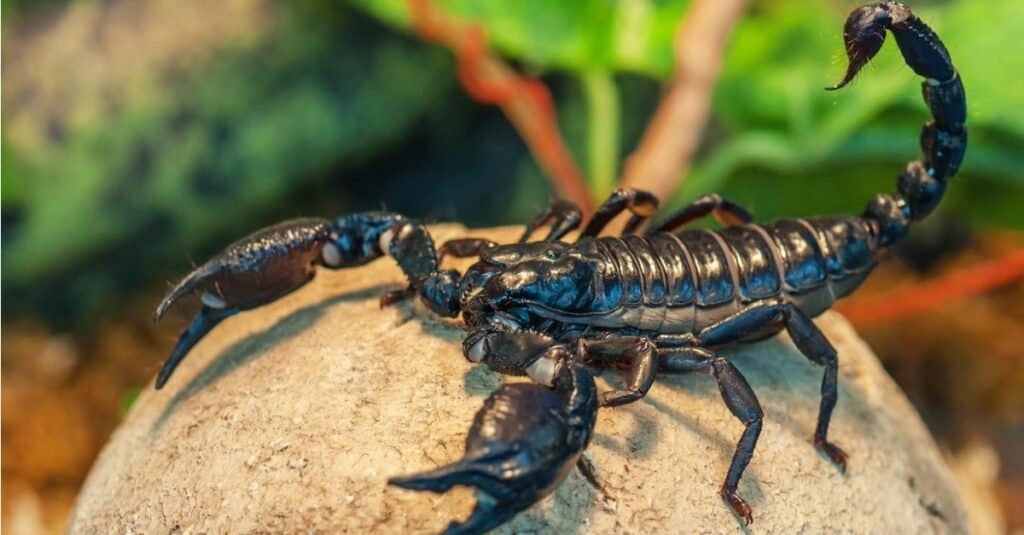
Scorpions have been on the earth for a very long time — hundreds of millions of years!
©Vova Shevchuk/Shutterstock.com
Scorpions are among the oldest arthropods still alive today. They belong to the class Arachnida, which includes other well-known arachnids like spiders, mites, and ticks. Scorpions have been around for more than 430 million years, with some of the oldest fossils of scorpions found in Scotland and Wisconsin. Scorpions may have evolved from aquatic ancestors that moved from sea to land during the Silurian period. As a testament to how successful their survival and evolutionary strategy is, scorpions have changed very little over time, and they still have many features that help them thrive in different habitats around the world.
4. The Most Venomous Scorpion is the Deathstalker
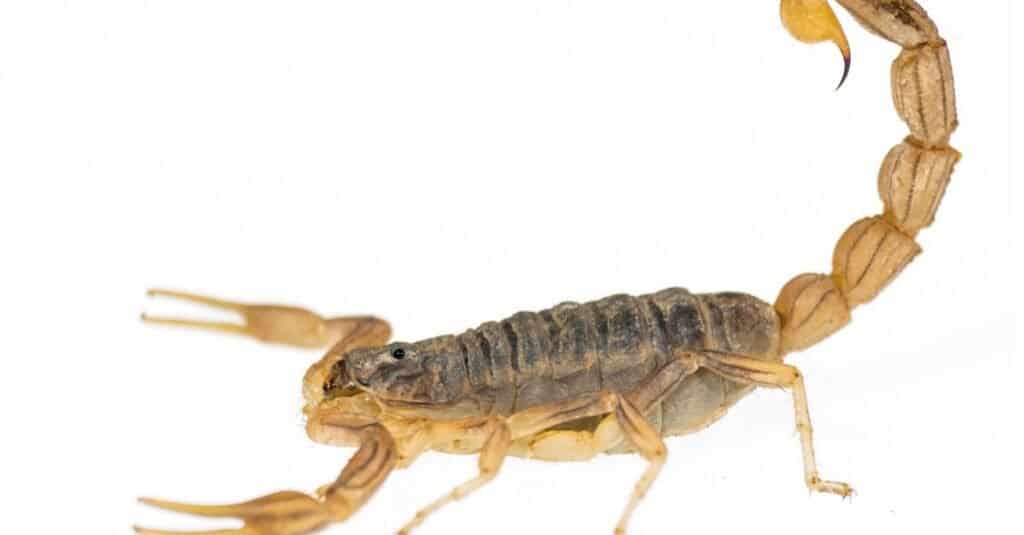
Deathstalkers are among the most deadly scorpions in the world.
©iStock.com/Javier Conejero
The deathstalker (scientific name Leiurus quinquestriatus) is the most venomous scorpion in the world and has a rather apt name! It belongs to the Buthidae family, which includes a lot of the other dangerous scorpions found in the world. The deathstalker lives in arid desert and scrubland regions throughout the Middle East and North Africa. Its venom contains a powerful mixture of neurotoxins that can cause intense pain, fever, convulsions, paralysis, coma, and even death. This scorpion fact is even listed in the Guinness World Records!
5. There is a Rough Correlation Between Scorpion Claw Size and Venom Potency
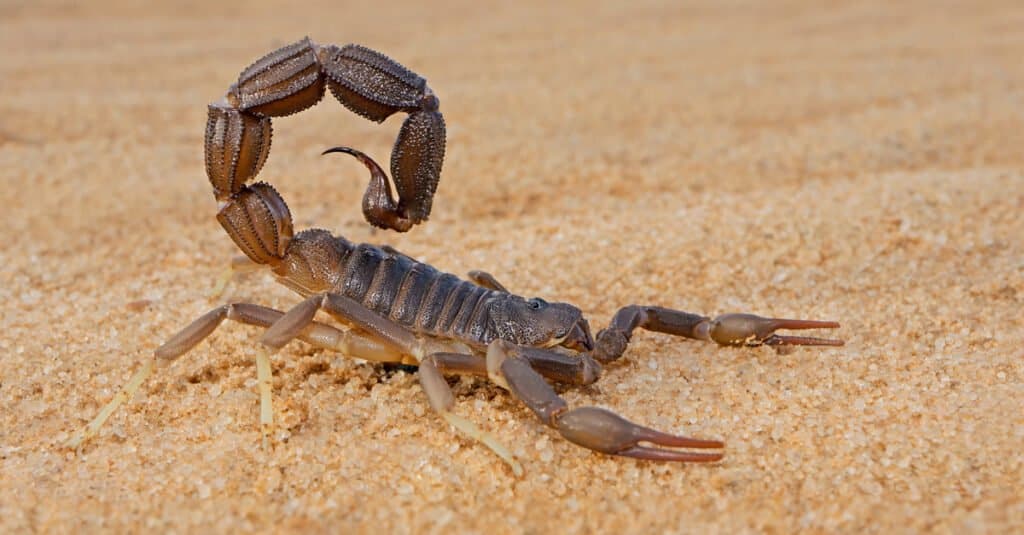
As a general rule, the smaller the claws the more potent the venom from the scorpion.
©EcoPrint/Shutterstock.com
There is a rough correlation between scorpion claw size and venom potency, meaning that scorpions with smaller claws tend to have more powerful venom than those with larger claws. This may be because scorpions use their claws for different purposes, such as defense, prey capture, and mating, and scorpions with smaller claws may rely more on their venom to subdue their prey and deter predators, while scorpions with larger claws may use their physical strength to overpower their enemies and attract mates. However, this correlation is not an absolute scorpion fact, and other factors such as habitat, diet, and evolutionary history may also influence scorpion venom potency.
Getting stung by a scorpion is never a good idea, but this rule can be useful if it’s taken with a grain of salt!
The photo featured at the top of this post is © Vova Shevchuk/Shutterstock.com
Thank you for reading! Have some feedback for us? Contact the AZ Animals editorial team.



